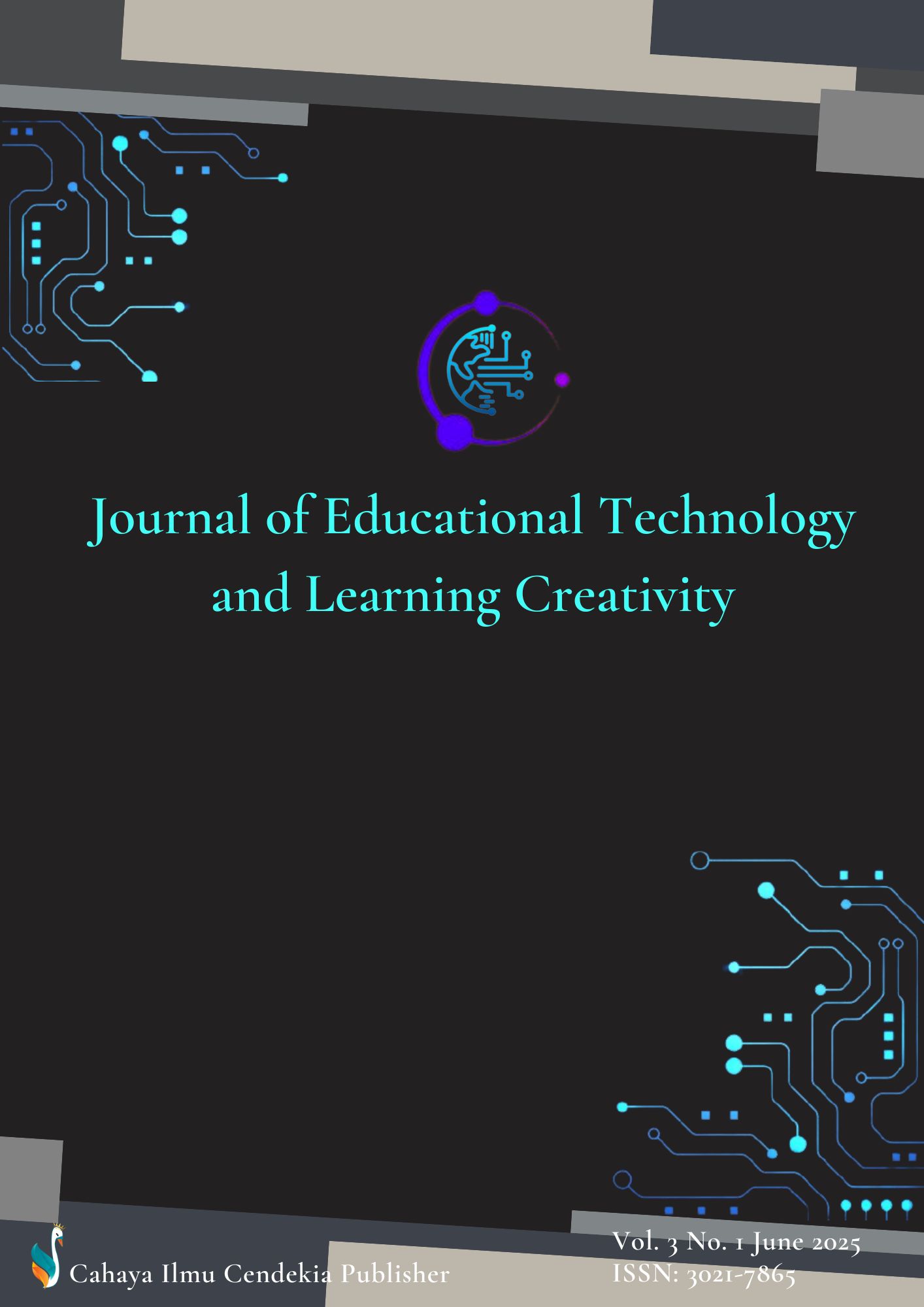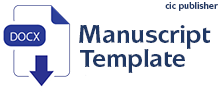Exploring the Effectiveness of Modern Agricultural Technology for Farmers for the Green Revolution
Abstract
Purpose of the study: This study aims to determine the extent of effectiveness of modern agricultural technology among farmers.
Methodology: This research employs a quantitative descriptive method to assess farmers' perceptions and experiences in utilizing modern agricultural technology. Data were collected through surveys distributed to selected farmers in Barangay Butong. The gathered data were analyzed using statistical tools to determine the level of effectiveness and the correlation between demographic factors and technology adoption.
Main Findings: The results indicate that while modern agricultural technology has contributed to improved farming practices, its effectiveness is still influenced by farmers' knowledge, financial capacity, and access to support services. The study found a low positive correlation between age and family income with the effectiveness of modern agricultural technology, whereas gender showed a very low negative correlation. These findings suggest that while technology provides potential benefits, its impact is not uniform among farmers.
Novelty/Originality of this study: The novelty of this study lies in its localized assessment of modern agricultural technology's effectiveness, focusing on Barangay Butong. Unlike previous studies that examine broader agricultural trends, this research provides insights into specific barriers and opportunities faced by small-scale farmers in adopting technological advancements.
References
N. Khan et al., “Potential role of technology innovation in transformation of sustainable food systems: a review,” Agric., vol. 11, no. 10, pp. 1–20, 2021, doi: 10.3390/agriculture11100984.
A. Gamage et al., “Role of organic farming for achieving sustainability in agriculture,” Farming Syst., vol. 1, no. 1, p. 100005, 2023, doi: 10.1016/j.farsys.2023.100005.
N. Khan, R. L. Ray, G. R. Sargani, M. Ihtisham, M. Khayyam, and S. Ismail, “Current progress and future prospects of agriculture technology: gateway to sustainable agriculture,” Sustain., vol. 13, no. 9, pp. 1–31, 2021, doi: 10.3390/su13094883.
M. J. Alam et al., “Agricultural extension service, technology adoption, and production risk nexus: Evidence from Bangladesh,” Heliyon, vol. 10, no. 14, p. e34226, 2024, doi: 10.1016/j.heliyon.2024.e34226.
H. T. Mulugeta and A. Heshmati, “Impacts of improved agricultural technology adoption on welfare in Africa: A meta-analysis,” Heliyon, vol. 9, no. 7, p. e17463, 2023, doi: 10.1016/j.heliyon.2023.e17463.
H. Azadi et al., “Genetically modified crops in developing countries: Savior or traitor?,” J. Clean. Prod., vol. 371, p. 133296, 2022, doi: https://doi.org/10.1016/j.jclepro.2022.133296.
H. J. Smidt and O. Jokonya, “Factors affecting digital technology adoption by small-scale farmers in agriculture value chains (AVCs) in South Africa,” Inf. Technol. Dev., vol. 28, no. 3, pp. 558–584, 2022, doi: 10.1080/02681102.2021.1975256.
G. Rizzo, G. Migliore, G. Schifani, and R. Vecchio, “Key factors influencing farmers’ adoption of sustainable innovations: a systematic literature review and research agenda,” Org. Agric., vol. 14, no. 1, pp. 57–84, 2024, doi: 10.1007/s13165-023-00440-7.
Z. Guo, X. Chen, and Y. Zhang, “Impact of environmental regulation perception on farmers’ agricultural green production technology adoption: A new perspective of social capital,” Technol. Soc., vol. 71, p. 102085, 2022, doi: 10.1016/j.techsoc.2022.102085.
S. B. Nazu, S. M. Saha, M. E. Hossain, S. Haque, and M. A. Khan, “Willingness to pay for adopting conservation tillage technologies in wheat cultivation: policy options for small-scale farmers,” Environ. Sci. Pollut. Res., vol. 29, no. 42, pp. 63458–63471, 2022, doi: 10.1007/s11356-022-20306-x.
M. Z. Tesfaye, B. B. Balana, and J. C. Bizimana, “Assessment of smallholder farmers’ demand for and adoption constraints to small-scale irrigation technologies: Evidence from Ethiopia,” Agric. Water Manag., vol. 250, pp. 0–31, 2021, doi: 10.1016/j.agwat.2021.106855.
E. Elahi, Z. Khalid, and Z. Zhang, “Understanding farmers’ intention and willingness to install renewable energy technology: a solution to reduce the environmental emissions of agriculture,” Appl. Energy, vol. 309, p. 118459, 2022, doi: 10.1016/j.apenergy.2021.118459.
J. P. Taramuel-Taramuel, I. A. Montoya-Restrepo, and D. Barrios, “Drivers linking farmers’ decision-making with farm performance: a systematic review and future research agenda,” Heliyon, vol. 9, no. 10, 2023, doi: 10.1016/j.heliyon.2023.e20820.
M. T. Hayden, R. Mattimoe, and L. Jack, “Sensemaking and the influencing factors on farmer decision-making,” J. Rural Stud., vol. 84, no. March, pp. 31–44, 2021, doi: 10.1016/j.jrurstud.2021.03.007.
R. Sapbamrer and A. Thammachai, “A systematic review of factors influencing farmers’ adoption of organic farming,” Sustain., vol. 13, no. 7, 2021, doi: 10.3390/su13073842.
W. J. de Lange, F. van der Bank, M. E. Volscheck, and T. E. Kleynhans, “Farmer competencies for successful farming in Sub-Sahara Africa,” J. Rural Stud., vol. 114, no. November 2024, p. 103549, 2025, doi: 10.1016/j.jrurstud.2024.103549.
Y. G. Aregaw, E. A. Endris, and E. Bojago, “Factors affecting the competence level of agricultural extension agents: a comprehensive analysis of core competencies in Northwestern Ethiopia,” Educ. Res. Int., vol. 2023, 2023, doi: 10.1155/2023/7928467.
R. M. Gunton, “What is enlightened agriculture? A multi-normative approach to the nature and values of food production systems,” Front. Sustain. Food Syst., vol. 7, 2023, doi: 10.3389/fsufs.2023.979818.
J. Garzón, L. Montes, J. Garzón, and G. Lampropoulos, “Systematic review of technology in aeroponics: introducing the technology adoption and integration in sustainable agriculture model,” Agronomy, vol. 13, no. 10, 2023, doi: 10.3390/agronomy13102517.
R. de Sousa, L. Bragança, M. V. da Silva, and R. S. Oliveira, “Challenges and solutions for sustainable food systems: the potential of home hydroponics,” Sustain., vol. 16, no. 2, 2024, doi: 10.3390/su16020817.
P. Sambo et al., “Hydroponic solutions for soilless production systems: issues and opportunities in a smart agriculture perspective,” Front. Plant Sci., vol. 10, no. July, 2019, doi: 10.3389/fpls.2019.00923.
M. Kendrick, M. Early, A. Michalovich, and M. Mangat, “Digital storytelling with youth from refugee backgrounds: possibilities for language and digital literacy learning,” TESOL Q., vol. 56, no. 3, pp. 961–984, 2022, doi: 10.1002/tesq.3146.
M. Crul et al., “How the different policies and school systems affect the inclusion of Syrian refugee children in Sweden, Germany, Greece, Lebanon and Turkey,” Comp. Migr. Stud., vol. 7, no. 1, 2019, doi: 10.1186/s40878-018-0110-6.
S. S. Madsen, “What is the motivation of Norwegian and New Zealand teacher educators for using digital technology when teaching?,” Nord. J. Comp. Int. Educ., vol. 4, no. 2, pp. 42–63, Jul. 2020, doi: 10.7577/njcie.3826.
L. Mulugo et al., “Unravelling technology-acceptance factors influencing farmer use of banana tissue culture planting materials in Central Uganda,” 2020, doi: 10.1080/20421338.2019.1634900.
D. A. M. M. O. Priantini, “The development of teaching video media based on Tri Kaya Parisudha in educational psychology courses,” J. Educ. Technol., vol. 4, no. 4, pp. 448–455, 2020, doi: https://doi.org/10.23887/jet.v4i4.29608.
S. Prasanna, P. Verma, and S. Bodh, “The role of food industries in sustainability transition: a review,” Environ. Dev. Sustain., 2024, doi: 10.1007/s10668-024-04642-1.
S. Bisoffi et al., “COVID-19 and sustainable food systems: what should we learn before the next emergency,” Front. Sustain. Food Syst., vol. 5, no. March, pp. 1–14, 2021, doi: 10.3389/fsufs.2021.650987.
I. C. Melchior and J. Newig, “Governing transitions towards sustainable agriculture—taking stock of an emerging field of research,” Sustain., vol. 13, no. 2, pp. 1–27, 2021, doi: 10.3390/su13020528.
Y. L. Everingham, E. Gyuris, and S. R. Connolly, “Enhancing student engagement to positively impact mathematics anxiety, confidence and achievement for interdisciplinary science subjects,” Int. J. Math. Educ. Sci. Technol., vol. 48, no. 8, pp. 1153–1165, 2017, doi: 10.1080/0020739X.2017.1305130.
S. Chairam, N. Klahan, and R. K. Coll, “Exploring secondary students’ understanding of chemical kinetics through inquiry-based learning activities,” Eurasia J. Math. Sci. Technol. Educ., vol. 11, no. 5, pp. 937–956, 2015, doi: 10.12973/eurasia.2015.1365a.
M. M. S. Maake and M. A. Antwi, “Farmer’s perceptions of effectiveness of public agricultural extension services in South Africa: an exploratory analysis of associated factors,” Agric. Food Secur., vol. 11, no. 1, pp. 1–15, 2022, doi: 10.1186/s40066-022-00372-7.
A. Khanna and S. Kaur, “An empirical analysis on adoption of precision agricultural techniques among farmers of Punjab for efficient land administration,” Land use policy, vol. 126, p. 106533, 2023, doi: https://doi.org/10.1016/j.landusepol.2022.106533.
Y. Khoviriza, M. Z. Azzahra, U. Galadima, and W. S. Salsabila, “Revealing the Impact: Meta Analysis of Problem Based Learning Models on Improving Communication Skills in Science Learning,” EduFisika J. Pendidik. Fis., vol. 9, no. 1, pp. 38–45, 2024, doi: 10.59052/edufisika.v9i1.32650.
L. Zysberg and N. Schwabsky, “School climate, academic self-efficacy and student achievement,” Educ. Psychol., vol. 41, no. 4, pp. 467–482, 2021, doi: 10.1080/01443410.2020.1813690.
Z. Fajri, H. Baharun, C. Muali, Shofiatun, L. Farida, and Y. Wahyuningtiyas, “Student’s learning motivation and interest; the effectiveness of online learning during covid-19 pandemic,” J. Phys. Conf. Ser., vol. 1899, no. 1, 2021, doi: 10.1088/1742-6596/1899/1/012178.
M. Yaska and B. M. Nuhu, “Assessment of measures of central tendency and dispersion using Likert-Type Scale,” African J. Adv. Sci. Technol. Res., vol. 16, no. 1, pp. 33–45, 2024, doi: 10.62154/ajastr.2024.016.010379.
M. C. Butter, E. M. Aguilera, M. G. B. Quintana, L. J. Pérez, and E. S. Valenzuela, “Quality assurance for postgraduate programs: Design of a model applied on a university in Chile,” Int. Rev. Res. Open Distrib. Learn., vol. 18, no. 1, pp. 266–292, 2017, doi: 10.19173/irrodl.v18i1.2670.
Y. S. Jeong and J. H. Park, “Algorithms, processes, and services for future ICT,” J. Inf. Process. Syst., vol. 16, no. 6, pp. 1231–1237, 2020, doi: 10.3745/JIPS.01.0061.
Ö. Yetkinel and M. Çolak, “The effects of transformation of public sphere with the new media in academy,” Eurasia J. Math. Sci. Technol. Educ., vol. 13, no. 8, pp. 5009–5018, 2017, doi: 10.12973/eurasia.2017.00979a.
T. Pajk, K. Van Isacker, B. Aberšek, and A. Flogie, “Stem education in eco-farming supported by ict and mobile applications,” J. Balt. Sci. Educ., vol. 20, no. 2, pp. 277–288, 2021, doi: 10.33225/jbse/21.20.277.
N. Ahmad, S. Rashid, and Z. Ali, “Investigating primary school teachers’ perceptions about professional development and its impact on students achievement,” J. Soc. Sci. Rev., vol. 3, no. 1, pp. 809–823, 2023, doi: 10.54183/jssr.v3i1.234.
A. Gautam, A. Chirputkar, and P. Pathak, “Opportunities and challenges in the application of Artificial Intelligence-based technologies in the healthcare Industry,” Int. Interdiscip. Humanit. Conf. Sustain. IIHC 2022 - Proc., pp. 1521–1524, 2022, doi: 10.1109/IIHC55949.2022.10059767.
D. A. Sayfullayeva, N. M. Tosheva, L. H. Nematova, D. N. Zokirova, and I. S. Inoyatov, “Methodology of using innovative technologies in technical institutions,” Psychol. Educ. J., vol. 58, no. 1, pp. 5351–5362, 2021, doi: 10.17762/pae.v58i1.2136.
L. von Kotzebue et al., “The framework dikolan (Digital competencies for teaching in science education) as basis for the self-assessment tool dikolan-grid,” Educ. Sci., vol. 11, no. 12, p. 775, Nov. 2021, doi: 10.3390/educsci11120775.
M. Farstad, A. M. Melås, and L. Klerkx, “Climate considerations aside: what really matters for farmers in their implementation of climate mitigation measures,” J. Rural Stud., vol. 96, no. April, pp. 259–269, 2022, doi: 10.1016/j.jrurstud.2022.11.003.
L. Foster, K. Szilagyi, A. Wairegi, C. Oguamanam, and J. de Beer, “Smart farming and artificial intelligence in East Africa: addressing indigeneity, plants, and gender,” Smart Agric. Technol., vol. 3, no. October 2022, p. 100132, 2023, doi: 10.1016/j.atech.2022.100132.
L. Yao, S. Haberman, D. F. McCaffrey, and J. R. Lockwood, “Large-sample properties of minimum discriminant information adjustment estimates under complex sampling designs,” ETS Res. Rep. Ser., vol. 2020, no. 1, pp. 1–20, 2020, doi: 10.1002/ets2.12297.
I. Kliziene, G. Cizauskas, S. Sipaviciene, R. Aleksandraviciene, and K. Zaicenkoviene, “Effects of a physical education program on physical activity and emotional well-being among primary school children,” Int. J. Environ. Res. Public Health, vol. 18, no. 14, 2021, doi: 10.3390/ijerph18147536.
E. C. Monterrosa, E. A. Frongillo, A. Drewnowski, S. de Pee, and S. Vandevijvere, “Sociocultural influences on food choices and implications for sustainable healthy diets,” Food Nutr. Bull., vol. 41, no. 2_suppl, pp. 59S-73S, 2020, doi: 10.1177/0379572120975874.
J. G. Fernández-Bustos, Á. Infantes-Paniagua, I. Gonzalez-Martí, and O. R. Contreras-Jordán, “Body dissatisfaction in adolescents: Differences by sex, bmi and type and organisation of physical activity,” Int. J. Environ. Res. Public Health, vol. 16, no. 17, 2019, doi: 10.3390/ijerph16173109.
S. Subhan, K. Thongkaew, and L. I. Digbun, “Batetannga Village Community, Binuang District, Polewali Mandar Regency: the value of responsible character education in Sibali-Sipatambak Culture,” J. Soc. Knowl. Educ., vol. 5, no. 1, pp. 21–28, 2024, doi: 10.37251/jske.v5i1.889.
S. Nurbaya, I. Rasulong, and M. N. R, “Competence, work culture and performance of honorary teachers in makassar elementary schoo,” Eur. J. Bus. Manag. Res., vol. 5, no. 2, 2020, doi: 10.24018/ejbmr.2020.5.2.281.
Copyright (c) 2025 Jennelyn Espinueva, Sovanborey Oy, Sophal Var

This work is licensed under a Creative Commons Attribution 4.0 International License.
Authors who publish with this journal agree to the following terms:
- Authors retain copyright and acknowledge that the Journal of Educational Technology and Learning Creativity is the first publisher licensed under a Creative Commons Attribution 4.0 International License.
- Authors are able to enter into separate, additional contractual arrangements for the non-exclusive distribution of the journal's published version of the work (e.g., post it to an institutional repository or publish it in a book), with an acknowledgment of its initial publication in this journal.
- Authors are permitted and encouraged to post their work online (e.g., in institutional repositories or on their website) prior to and during the submission process, as it can lead to productive exchanges and earlier and greater citation of published work.


.png)


.png)
.png)
.png)












